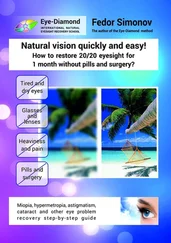An introductory textbook for people trying to get firsthand and condensed knowledge on Smart Grid standardization with a focus on ICT as well as to have a reference textbook dealing with the various standards to be applied in Smart Grids is a motivation for the authors of this book [Uslar 2013].
Other criteria may be useful too. For example, it is better to use a mature standard. A mature standard is a standard that has been in use for sufficient time that most of its initial faults and inherent problems have been identified and removed or reduced by further development [NIST SP1108r3].
1.8.4 Cybersecurity Standards
Cybersecurity standards enable organizations to practice safe security techniques and to reduce the number of successful cybersecurity attacks. In general, the standards provide outlines as well as specific techniques for implementing cybersecurity functions. Appendix Jincludes a list of most common acronyms used in the book.
Cybersecurity guidance is provided by national and international organizations. Standards are continuously developed and revised by different organizations, forums, and associations that are:
International – e.g. IEC, ISA, ISO, ITU, IETF, IEEE.
Consortium – e.g. SAE, OGC, ZigBee Alliance, HomePlug Alliance, Wi‐Fi Alliance, HomeGrid Forum, OASIS, ISF.
Regional and National – e.g. NIST, ANSI, NEMA, ASHRAE, NAISB.
DOE is working with NIST to enable manufacturers of products to use current cybersecurity guidance. In 2012, the DOE published a guideline for risk management process [DOE 2012]. In the United States, NIST published standards that are mandatory for federal agencies as well as special publications that provide guidance for information system security for private industries. Examples of alliances include:
ZigBee.
Wi‐Fi.
HomePlug.
Powerline.
Z‐Wave.
Current activities in ICS security are supported by many standards, programs, organizations, forum, and associations such as:
American Gas Association (AGA) Standard 12, Cryptographic Protection of SCADA
Communications.
American Petroleum Institute (API) Standard 1164, Pipeline SCADA Security.
Center for Control System Security at Sandia National Laboratories (SNL).
Chemical Sector Cyber Security Program.
Chemical Industry Data Exchange (CIDX).
DHS Control Systems Security Program (CSSP).
DHS CSSP Recommended Practices.
DHS Process Control Systems Forum (PCSF).
Electric Power Research Institute (EPRI).
Institute of Electrical and Electronics Engineers (IEEE).
Institute for Information Infrastructure Protection (I3P).
International Electrotechnical Commission (IEC) Technical Committees 65 and 57.
ISA99 Industrial Automation and Control Systems Security Standards.
ISA100 Wireless Systems for Automation.
International Council on Large Electric Systems (CIGRE).
LOGI2C – Linking the Oil and Gas Industry to Improve Cyber Security.
National SCADA Test Bed (NSTB).
NIST 800 Series Security Guidelines.
NIST Industrial Control System Security Project.
NIST Industrial Control Security Testbed.
North American Electric Reliability Council (NERC).
SCADA and Control Systems Procurement Project.
US‐CERT Control Systems Security Center (CSSC).
2 Advancing Security
2.1 Emerging Technologies
While the term security (or cybersecurity) is broadly defined and understood, there is a trend about the multidisciplinary aspects of the concept and more specifically about the need to advance technical security. While the technical view about is unilateral, we consider that advancing security for Smart Grid is also needed because of the emerging technologies. Although the world of emerging technologies in Smart Grid is almost incomprehensible, we provide an overview and introduction to these related technologies: Internet of Things (IoT), Internet of Everything (IoE), and cyber–physical systems (CPS). We discuss how these technologies impact security of Smart Grid systems and how security controls should be increased at higher levels.
In simple terms, the IoT refers to the networked interconnection of everyday objects. The IoT is a general evolution of the Internet from a network of interconnected computers to a network of interconnected objects [IntSoc 2015a].
Since the term IoT was first coined by the Auto‐ID center in 1999 [AUTO‐ID 1999], the development of the underlying concepts has ever increased its pace [Santucci 2010]. Nowadays, the IoT presents a strong focus of research with various initiatives working on the (re)design, application, and usage of standard Internet technologies in the IoT technology.
Despite being a buzzword, IoT technology denotes a trend where a large number of embedded devices employ communication services offered by communication protocols. The embedded electronics, software, sensors, and network connectivity enable the objects to collect and exchange data. Many of these devices, often called smart objects, are not directly operated by humans but exist as components spread out in the environment [RFC 7452]. Such devices have been used in the industry for decades, usually in the form of non‐ Internet Protocol (IP)/proprietary protocols that are connected to IP‐based networks by way of protocol translation gateways.
The IoT is defined as a global infrastructure for the information society, enabling advanced services by interconnecting (physical and virtual) things based on existing and evolving interoperable information and communication technologies [ITU‐T 2012]. The IoT refers broadly to the extension of network connectivity and computing capability to objects, devices, sensors, and items not ordinarily considered to be computers [IntSoc 2015a]. The IoT technology assumes the interconnection of highly heterogeneous networked entities and networks following a number of communication patterns such as human to human (H2H), human to thing (H2T), thing to thing (T2T), or thing to things (T2Ts).
With many definitions, but similar concepts, there is no single, universally accepted definition for the term. Different definitions are used by various groups to describe or promote a particular view of what IoT means and its most important attributes. Some definitions specify the concept of the Internet, while others do not [IntSoc 2015a], and others define the connection of things on a multipoint basis [ABI Research 2015a]. The various definitions of IoT emphasize different aspects of the IoT phenomenon from different focal points and use cases, but there are concerns such as the following:
The disparate definitions could be a source of confusion in dialogue on IoT issues, particularly in discussions between stakeholder groups or industry segments.
Different perspectives that could be factored into discussions create a vulnerable technology that may not be able to deal with several threats (e.g. economic, cyber, natural, etc.).
Some fuzziness still exists in these definitions, but one argues that every physical object has a virtual component that can produce and consume services and collaborate toward a common goal [Roman 2011] .Things have identities and virtual personalities operating in smart spaces using intelligent interfaces to connect and communicate within social, environmental, and user contexts [EC‐EPoSS 2008]. These characteristics enable IoT to extend anywhere, anyhow, anytime computing to anything, anyone, any service [EC‐EPoSS 2008], [Roman 2011]. In the IoT paradigm, everything real becomes virtual, which means that each person and thing has a locatable, addressable, and readable counterpart on the Internet.
2.1.1.1 Characteristics of Objects
Читать дальше












